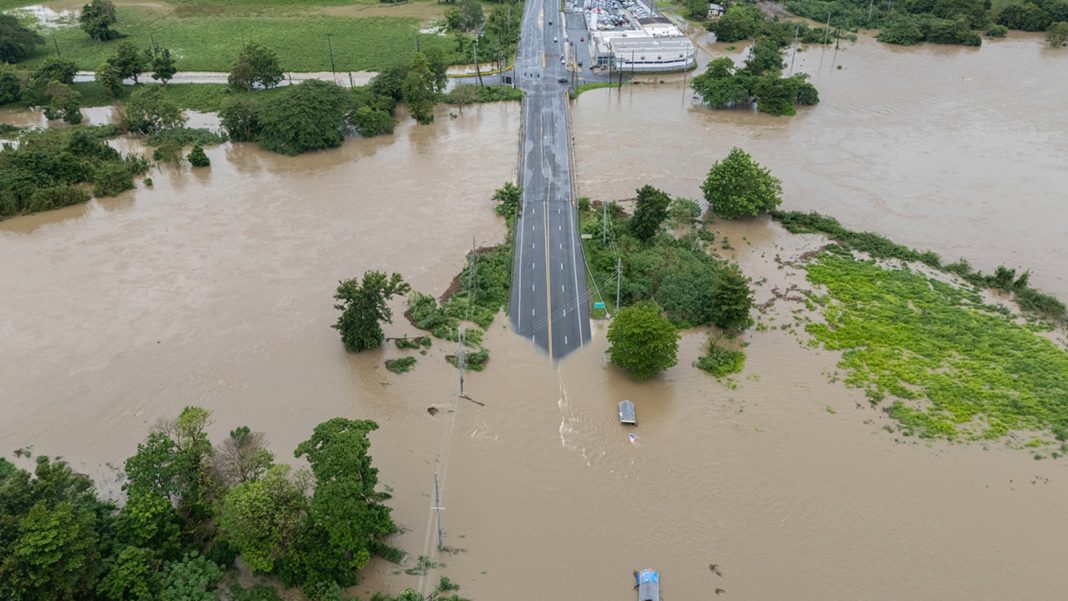Hurricane Ernesto recently hit Puerto Rico, causing torrential rain and widespread power outages. The storm, which is now heading towards Bermuda, had maximum sustained winds of 80 mph and was moving northwest at 16 mph. While Puerto Rico and its outlying islands are no longer under tropical storm warnings, a hurricane watch has been issued for Bermuda. The U.S. Virgin Islands experienced an islandwide blackout, and several cell phone towers were offline in Puerto Rico. Schools and government agencies remained closed in both the U.S. and British Virgin Islands and Puerto Rico.
The impact of the storm was particularly felt in Puerto Rico, where heavy flooding was reported in several areas, causing road closures and damage to infrastructure. More than 140 flights were canceled to and from Puerto Rico. In the north coastal town of Toa Baja, residents were concerned about flooding and moved their cars to higher ground. Flash flood warnings remained in effect due to ongoing rains. The mayor of Culebra, Edilberto Romero, reported fallen trees and blown-off roofs in the area.
Ernesto is expected to strengthen into a major hurricane and pass near Bermuda on Saturday. Bermuda’s National Security Minister, Michael Weeks, urged residents to prepare for worsening conditions and warned against complacency. Forecasters also issued warnings about heavy swells along the U.S. East Coast, posing a risk of dangerous rip currents.
In terms of rainfall, 4 to 6 inches are expected in the U.S. and British Virgin Islands, 6 to 8 inches in Puerto Rico, and up to 10 inches in isolated areas. The power outage situation in Puerto Rico was severe, with over 640,000 customers without electricity. Additionally, 23 hospitals in the U.S. territory were operating on generators. The assessment of damage and the timeline for power restoration are still uncertain. Luma Energy, the company responsible for power transmission and distribution in Puerto Rico, stated that their priority was to restore power to essential services such as hospitals and the island’s water and sewer company. More than 300,000 customers were without water due to the power outages.
The vulnerability of Puerto Rico’s power grid is a cause for concern. Hurricane Maria in 2017 severely damaged the system, and it is still in the process of being rebuilt. The current widespread outages highlight the risk faced by vulnerable households in Puerto Rico. Charlotte Gossett Navarro, the chief director for Puerto Rico at the Hispanic Federation, expressed frustration at the recurring outages, especially given the poverty rate of over 40% on the island. While some residents can afford generators, many rely on candles for lighting.
However, there has been progress in the adoption of rooftop solar systems in Puerto Rico. Since Hurricane Maria, the number of rooftop installations has increased from 8,000 to over 117,000, according to the Institute for Energy Economics and Financial Analysis. This growth in solar energy helps reduce dependence on fossil fuels, which currently generate 94% of the island’s electricity.
The occurrence of three hurricanes by mid-August this year is unusual. The National Oceanic and Atmospheric Administration predicted an above-average Atlantic hurricane season due to record warm ocean temperatures. They forecasted 17 to 25 named storms, with four to seven major hurricanes. This highlights the need for preparedness and resilience in vulnerable areas.
As Hurricane Ernesto approaches Bermuda and continues to impact Puerto Rico and the surrounding regions, it is crucial for residents to stay informed and take necessary precautions. The storm serves as a reminder of the importance of investing in resilient infrastructure and renewable energy sources to mitigate the impact of future hurricanes.

